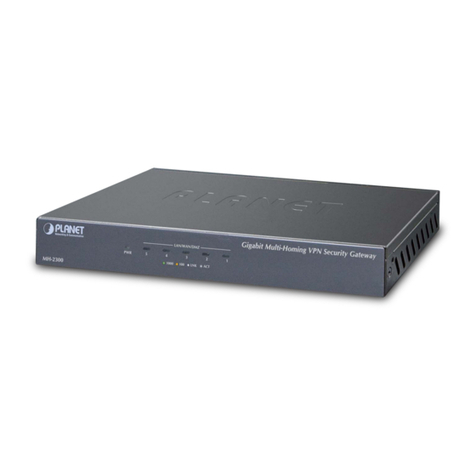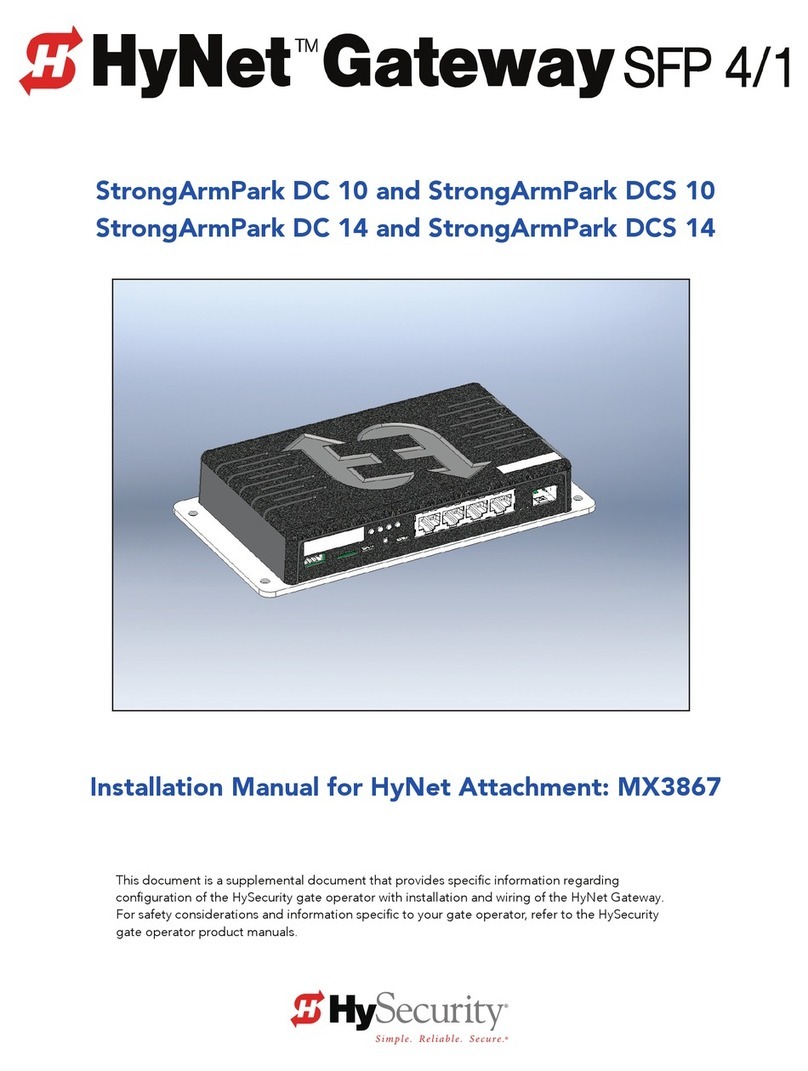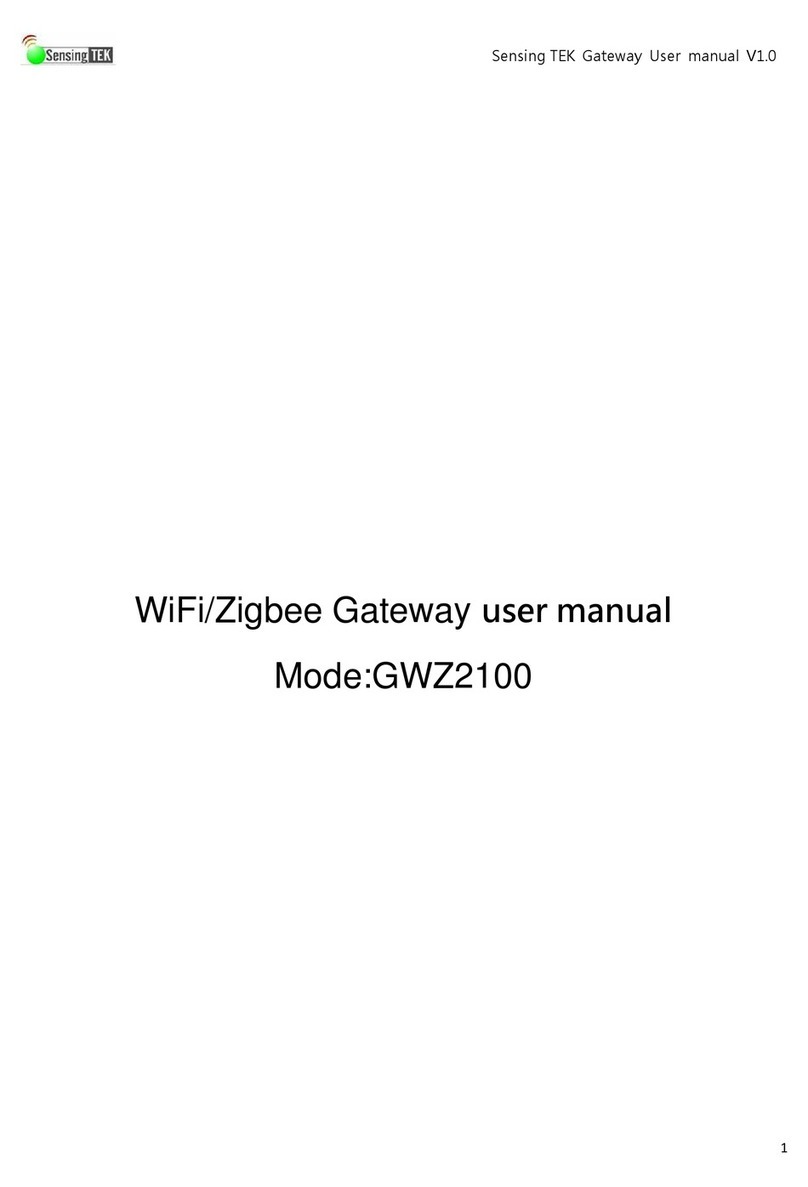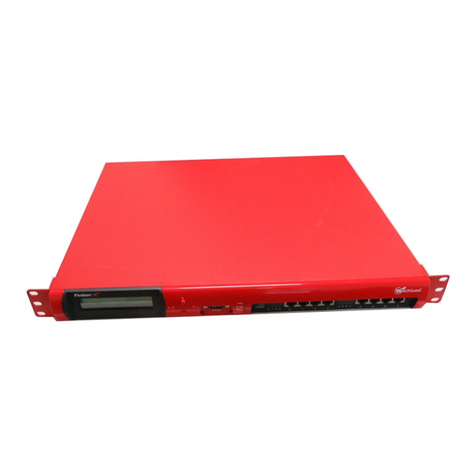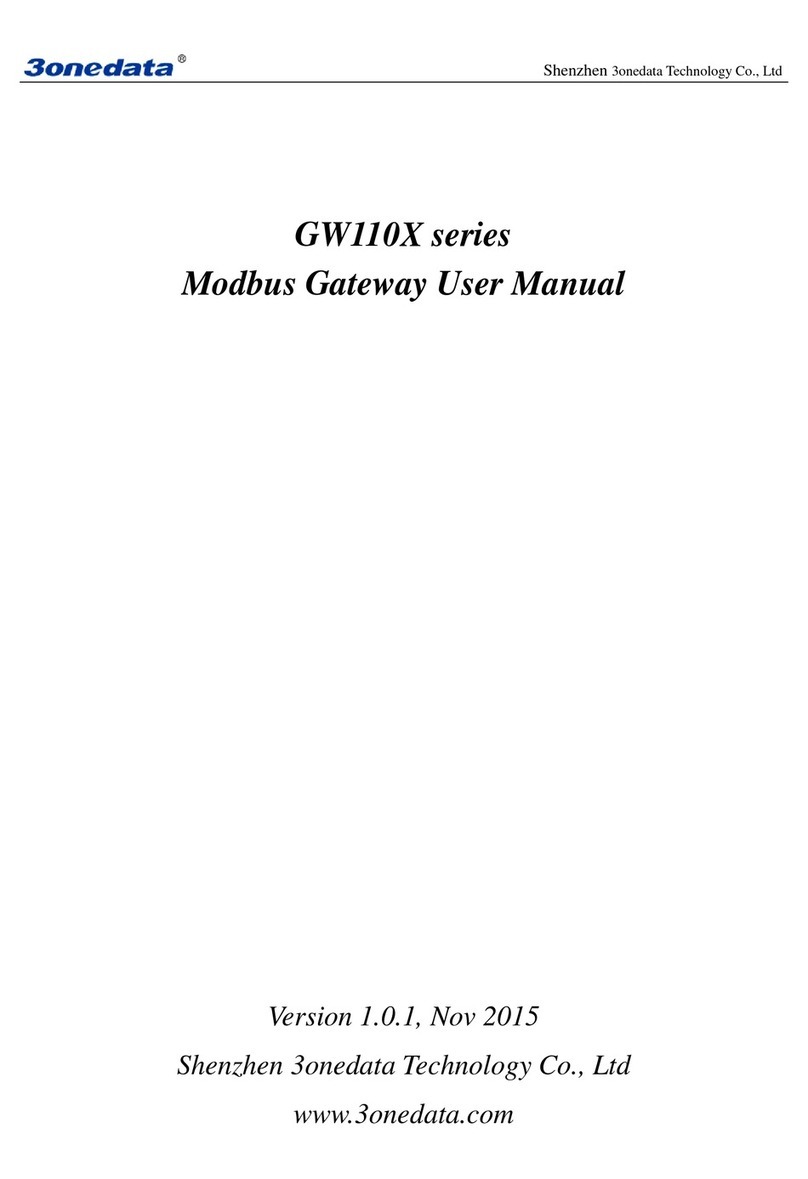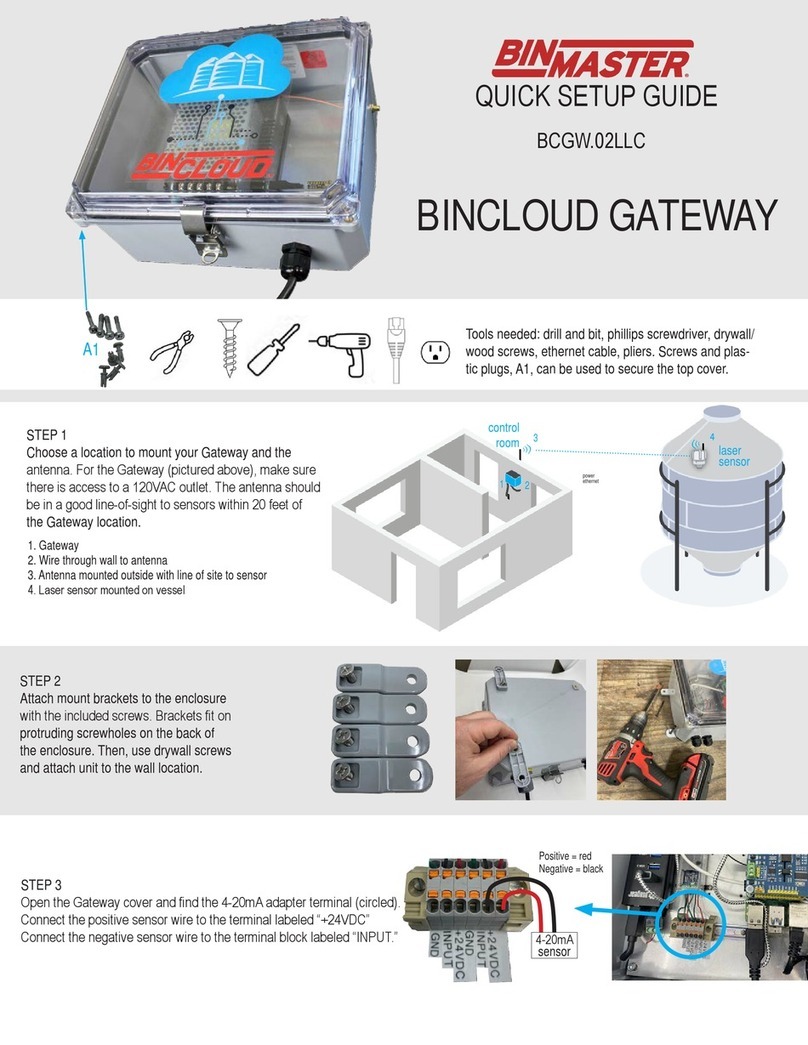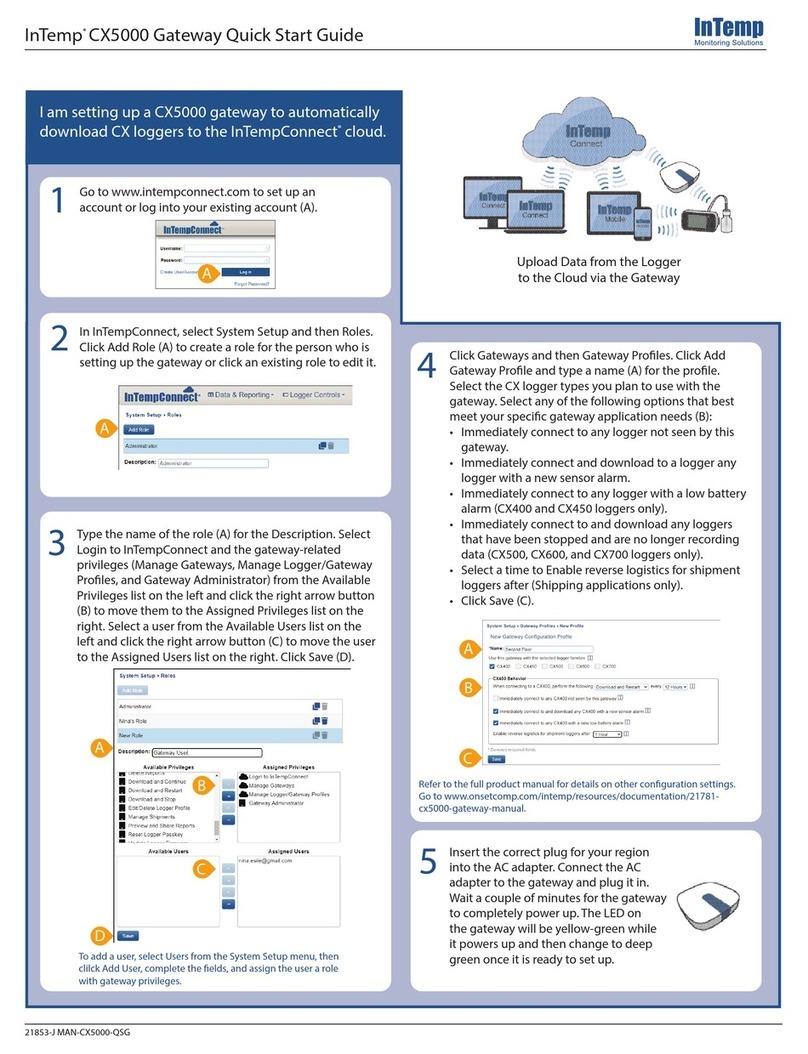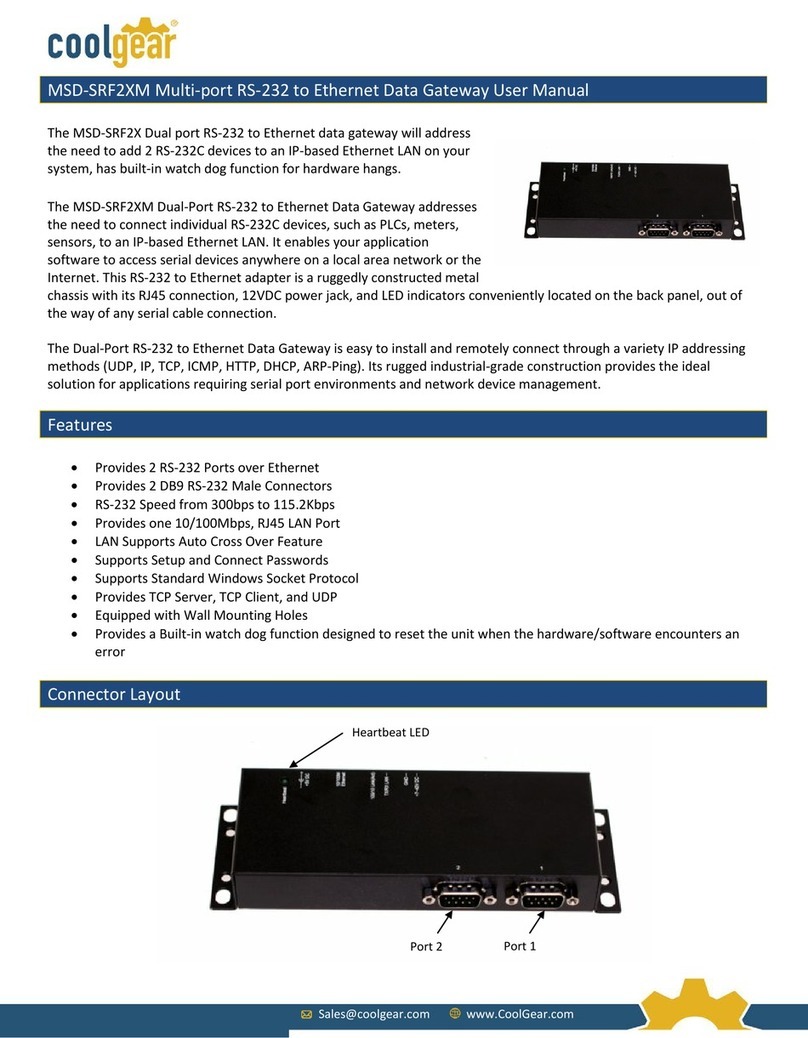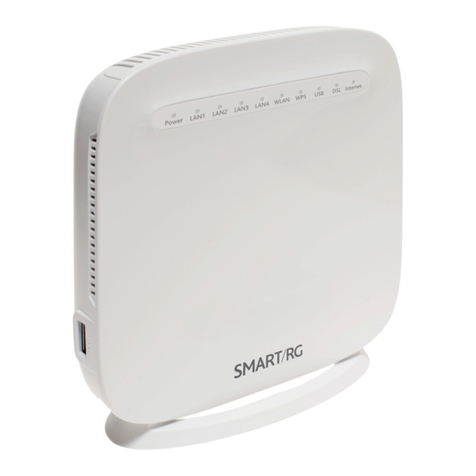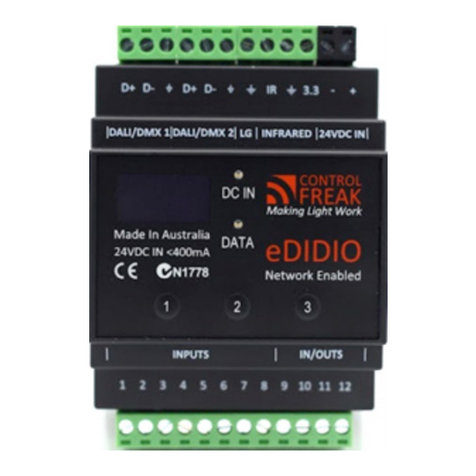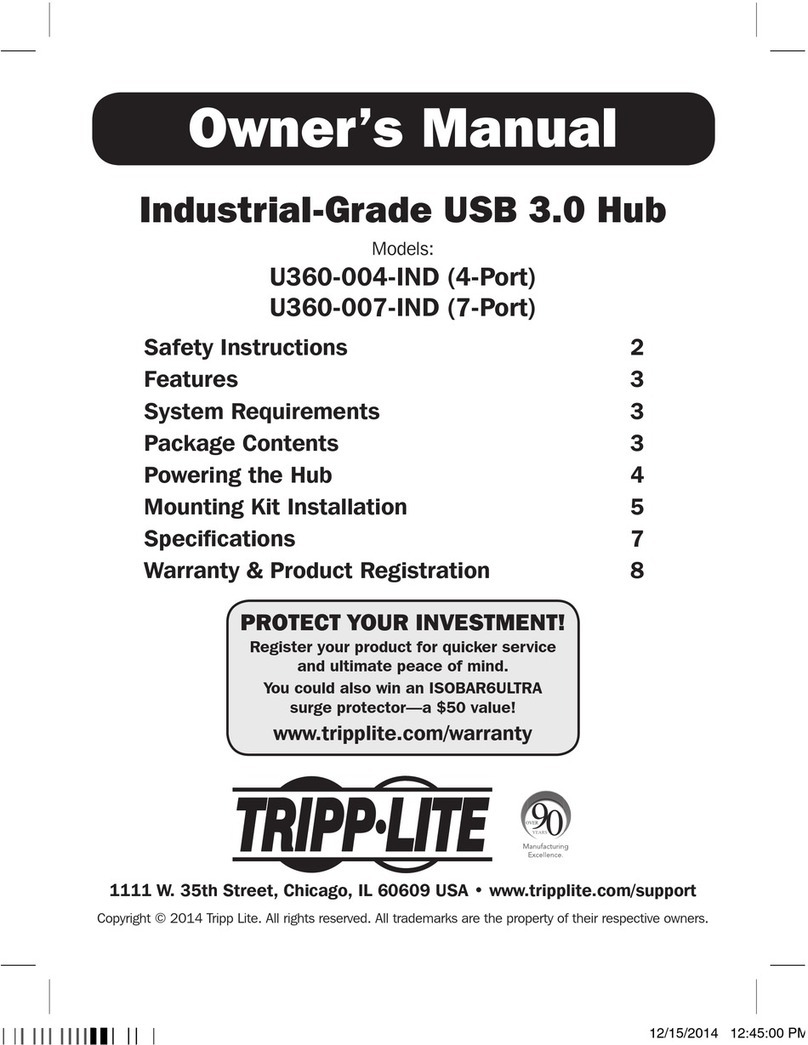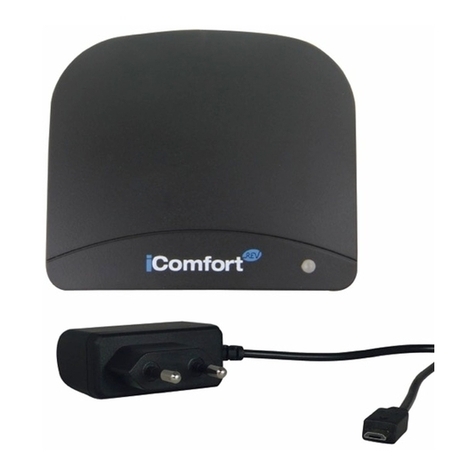TopJet Alert Ethernet Gateway User manual

MonnitLink™Ethernet Gateway
Quick Start Guide for Use With iMonnit Online Software
Ethernet Gateway Quick Start Overview
1. Create and setup your iMonnit™ account.
2. Connect and power on the gateway.
Important: When setting up your sensing network, please
make sure your sensors are at least 3-5 feet away from
the gateway, and the sensors are at least 1 foot apart from
each other.
Create and Setup Your iMonnit Account
• Visit http://www.imonnit.com to create an iMonnit online
sensor monitoring account.
• Follow the on-screen instructions to enter your account
and contact information.
• Youwillbepromptedtocreateyourrstsensornetwork.
Simply enter a name for your network.
• Next you will be prompted to add a wireless gateway
and wireless sensors to your network.
• Enter the information from your MonnitLink™
gateway then click the “Assign Gateway” button.
• Entertheinformationfromyourrstwireless
sensor then click the “Assign Sensor” button.
+
_
Back of Sensor
Peel
Contains: FCC ID: ZTL-RFSC1
IC: 9794A-RFSC1
Sensor ID: ######
Sensor Code: XXXXXX
• On the next screen, enter a name for the wireless sen-
sor and use the drop down to tell us how you are going
to be using the wireless sensor. (This allows us to sug-
gestsettingsforyoursensor.)Whennished,clickthe
“Continue” button.
• Repeat these steps to add any additional wireless
sensors to your network.
MonnitLink Ethernet Gateway Setup
Antenna ConnectorEthernet PortPower Plug Control Button
Back Panel
• Attach the included antenna to the connector.
• Plug an Ethernet cable with internet connectivity into
the gateway.
• Plug the power supply into a power outlet then connect
to the gateway.
• Check that the three LED lights on the front of the gate-
way change to green. Once all three lights turn green,
your network is ready to use.
(If the lights do not turn green view the Ethernet gateway trouble-
shooting guide online at, http://www.monnit.com/support/ )
Using Your Wireless Sensors
• From the Overview Page of iMonnit, click “View
Gateways” and check that your gateway status has
changed to active in iMonnit Express.
• From the Overview Page of iMonnit, click “View sen-
sors” to return to the sensors overview page.
• Click on a sensor’s information to access detailed infor-
mation for that sensor.
• Click the “Edit” tab from a sensor’s detail view, to
change sensor settings.
Contains FCC ID: ZTL-RFSC1
and IC: 9794A-RFSC1
This device complies with Part 15 of the
FCC Rules. Operation is subject to the
following two conditions:
(1) this device may not cause harmful
interference and
(2) this device must accept any interference
received, including interference that may
cause undesired operation.
ID: ######
Code: XXXXXX
Temp Alert account.
Follow
Follow the on-screen instructions to enter your account
and contact information.
Note: If you ordered the "Advanced Plan" please contact
after you entered your contact information to activate.
you can click "view
you can click "view sen-
Visit: www.alerts.topjetsales.com
Visit: www.alerts.topjetsales.com
If you ordered the "Advanced Plan" please contact us after you
setup your contact information so that we can activate account.
alerts.topjetsales.com

• People to Notify - Select the user(s) to receive the
noticationandclickthearrowbuttontoaddthemtothe
recipientlist.Bydefault,emailnoticationsareactivated.
Clickingthenoticationdeliverymethodicontoggles
them on and off (green is on, grey is off).
• Sent From - Assign devices (sensors and gateways) that
willcausethenoticationtobesent.Whenanotication
is sent from the system, it will automatically include the
devicenameandthedatathatcausedthenoticationto
besent.Asinglenoticationcanbeassignedtomultiple
sensors or gateways.
• Devices to Notify - If you have a Monnit Control or
NotierA/Vonyournetwork,youwillseea“Devicesto
Notify”tab.Thisallowsthenoticationtointeractwith
these devices. Add a device and click the control icons
to toggle their settings.
Note: Control devices have two relays per device that are controlled
separately. You can turn a relay on, off or toggle the state. You can
also set a duration by clicking on the timer icon. This will perform the
selected toggle (on/off/toggle) for a set duration, then change back.
For more detailed instructions, documentation,
“how-to” guides and video demonstrations on using
Monnit wireless sensors, wireless gateways and
iMonnit software, visit our support page at
http://www.monnit.com/support/.
MQS-022-2B (09/15)
• Insert batteries into the wireless sensors.
• Check that the sensors change to active as batteries are
inserted. (You may need to click the refresh button at
the top, right side of overview.)
• The iMonnit online software is now collecting your
sensor data.
Note: Any change made to a sensor’s settings will be downloaded to
the sensor on the next sensor heartbeat (check-in). Once a change
has been made and “Saved,” you will not be able to edit that sensor’s
congurations again until the sensor has downloaded the new setting.
If you want to force a sensor to download new settings, you can power
cycle the sensor by removing the battery, waiting 30 seconds, then
reinsert the battery.
Setting Up Sensor Notications
• Noticationscanbecreated,deletedoreditedforany
sensororgroupofsensorsbyclickingon“Notications”
in the main menu.
Toggle On/Off Click to Open Detail View Send Test Edit Delete
• Whencreatinganotication,youwillneedtoselectthe
typeofnoticationtocreate.
• SensorReadingNotication - Alert based on sensor reading
or sensing activity.
• BatteryNotication - Alert based on battery power remaining.
• InactivityNotication - Alert when a sensor has not checked in.
• AdvancedNotications - Alerts based on advanced rules, such
as comparing past data points with current ones.
• ExistingNotications-Usenoticationsthathavealready
been created on your account with the selected sensor.
• NoticationSettings-Setnoticationparameterssuch
as name, message and sensor conditions that will cause
thenoticationtobesent.
Monnit, Monnit Logo, MonnitLink and iMonnit are trademarks of Monnit, Corp.
© 2009-2015 Monnit Corp. All Rights Reserved.
Monnit Corporation
4403 South 500 West
Murray, UT 84123
801-561-5555
www.monnit.com
The system is now collecting your sensor data.
Please visit www.topjetsales.com/alerts.turtorials
for help setting up your notifications.
If you have questions please feel free to contact us.
Once you are done you can view your sensor's data
on www.alerts.topjetsales.com for evaluation on your
cell phone, Ipad, computer, etc.
Inside the Box:
>Temp Alert Sensor(s)
>Ethernet Gateway
>Power Supply
>Antenna
>6 ft Ethernet Cable
>Mounting Hardware
>Capsule w/substance (air temp sensors w/probe only)
1-800-913-0192
Please visit
www.topjetsales.com/temperature-alert/tutorials
for help setting up your notifications.

3. Installation of the Wireless Sensors
Mount the sensor(s) with the antenna in an upright position.
Use the double sided tape or screws included.
Place the sensor where it's easy to replace the battery from the bottom of sensor.
Installation tips:
[Refrigeration Equipment] Use Air Temp Sensor with probe
Install wireless sensor(s) outside of the cooler and the probe inside to ensure proper operation.
(Longer battery life and better signal between sensors and gateway)
Wireless sensors communicate via RF (radio frequency) and it is important to note that the metal construction of
most coolers and freezers can interfere with radio signal. It is also important to note that the temperatures inside
of coolers and freezers can often be below the recommended operating temperature of the batteries used in
wireless sensors.
Drill a hole in the refrigerated box large enough for the probe to pass through. Choose hole cautiously.
Mount the probe on the inside wall away from the door if all possible to obtain accurate readings.
Install the probe inside the capsule provided with substance.
This will prevent false notifications in most coolers. The substance will slow the heating and cooling of
the temperature probe. This will allow the probe to report temperatures consistent with the contents of
the cooler verses any immediate introduction of warm air when the cooler door is opened.
(Push the probe through top of capsule cover until submerged in the substance)
Use wire ties to take up any slack. Silicone any space to insure sealed cooler.
inside to ensure proper operation.
Additional Wireless Sensor Instructions
Additional Wireless Sensor Instructions

Popular Gateway manuals by other brands
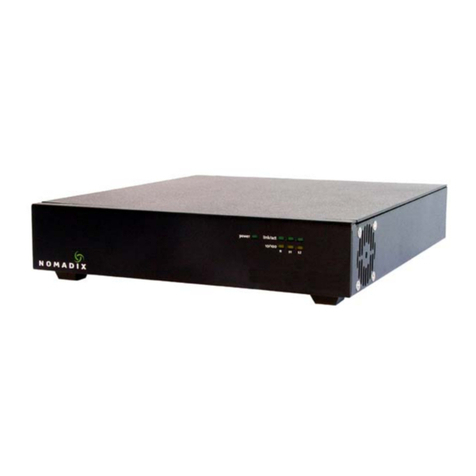
Nomadix
Nomadix HotSpot Gateway HSG user guide

TransLite
TransLite TL-9508B manual

Sierra Wireless
Sierra Wireless Airlink Raven XE H2225E manual
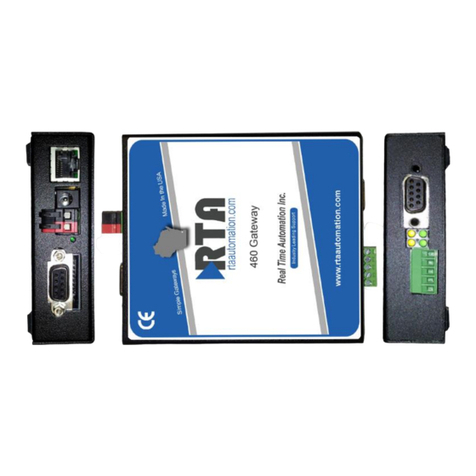
RTA
RTA 460MCPBS Product user guide
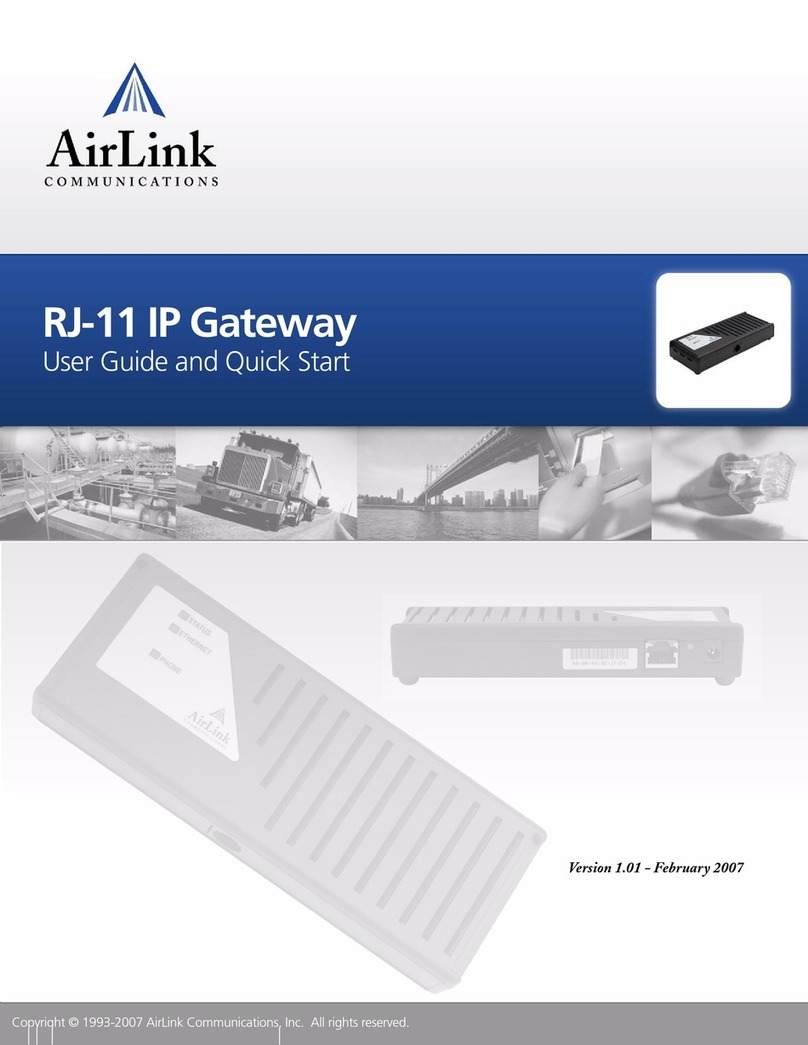
AirLink Communications
AirLink Communications Host RJ-11 User guide and quick start
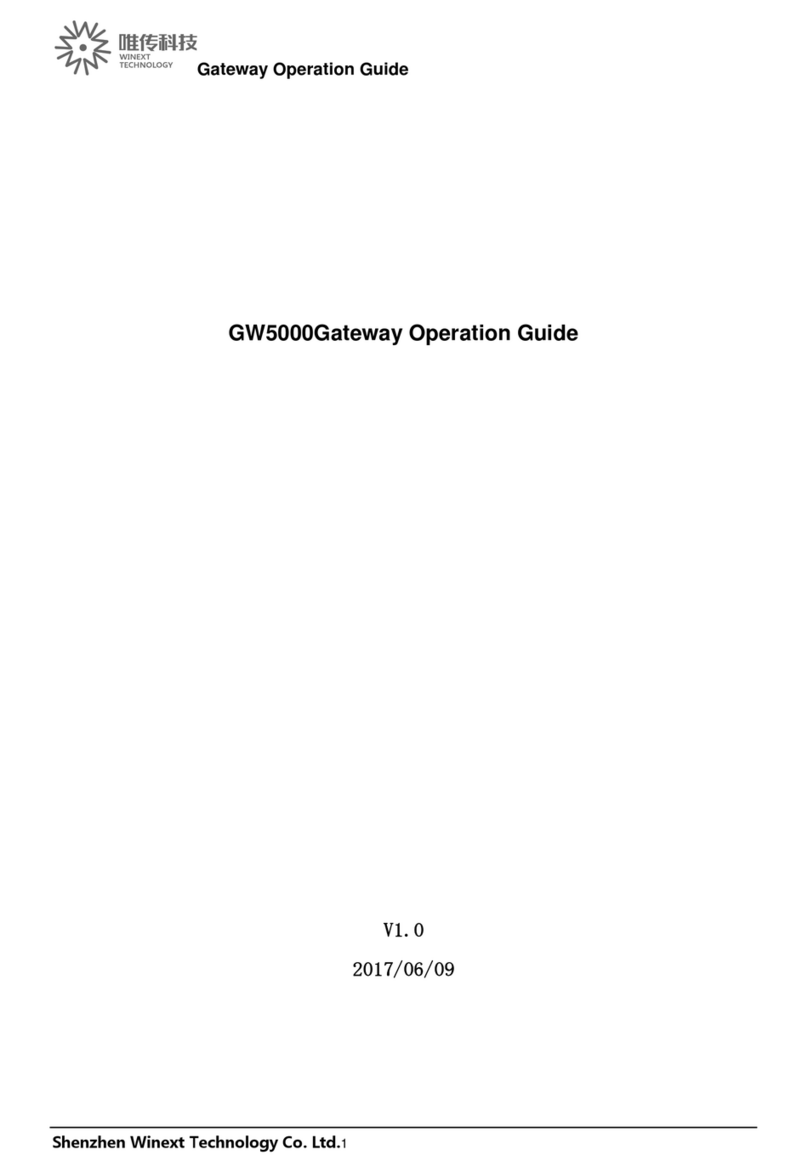
Shenzhen Winext Technology
Shenzhen Winext Technology GW5000 Operation guide
